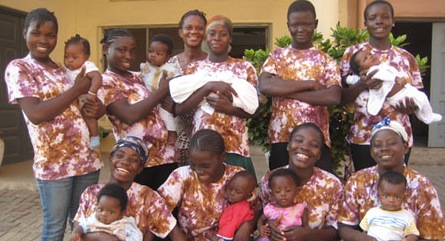How ABAN Changes Lives (And Why)
Have you heard of ABAN (A Ban Against Neglect)? It’s a non-profit located in Accra, Ghana working to change the lives of street girls and clean up the environment simultaneously. The organization was started by two students who were studying abroad in Ghana their junior year of college; these women were able to recognize first-hand the problems that were present in Accra…and also a solution.
Callie and Becca saw the hugely detrimental nature of living on the streets in Ghana. They noticed that very young women (girls, really) were robbing, stealing, and prostituting in order to make it through one more day. Many were pregnant or had young children and babies to look after as well. Some were playing caregiver after their parents had died and were responsible for multiple siblings. Clearly, this was a recipe for disaster, disease, and a very cyclical poverty cycle.
But the co-founders of ABAN also noticed a second issue in Accra…this one an environmental one. The women estimate that there are about 300 or 400 private vendors of water sachets (like the one pictured below). Ghanaians bite off a corner or the sachet and hydrate themselves. These little pouches are fantastic for providing clean and safe drinking water, but with no formal recycling or trash system in place, they end up coating the city streets and cause many problems for the environment.
So what can be done with thousands of used water sachets and thousands of street girls? Callie and Becca had an idea…to clean and sanitize the sachets, sew them into various purses and bags, and sell them to raise money for the women who needed it. Over time this nugget of an idea blossomed into what it is today…ABAN.
Today, ABAN takes in young street women and their children and provides them with shelter and food. Over time, the women receive a basic education and training in an area of their choice so that they can become self-sustainable post-ABAN graduation. The girls who choose to be trained as seamstresses sew the purses and bags that are sold at house partys, in select boutiques, Whole Foods, and online on ABAN’s website. The revenue generated from these products as well as that from grants and donations funds this life-changing organization.
Check out the nine minute documentary below to understand more about ABAN’s mission and purpose, as well as meet some of the lovely women whose lives have been changed. Can’t view it? Watch the video on YouTube here.
Cause-Related Marketing Trends
Obviously, ABAN is not alone as an operating non-profit. There are thousands of non-profits, a few of which I outlined in a previous post, Everyone Cares About Something. But in a tight economy, what are non-profits doing in terms of cause-related marketing? How are organizations funding their projects?
Many are partnering with another organization (or two). Susan G. Comen and the NFL. Save the Children and Walmart. Make-a-Wish and Disney. Not only does a smart partnership raise money for the non-profit, it ups both organizations’ brand equity and recognition. Done well, and a partnership can be lucrative and successful. Done poorly, and both brands will hurt.
Another major trend in the cause-related marketing realm is to hold races, silent auctions, fundraisers–events to raise money. Just as with a partnership, these events can be highly successful and have the potential to raise a lot of revenue, but only if the event costs are kept low and it is executed well. Everyone has heard of Race for the Cure, but smaller organizations struggle to gain recognition and attendance to their fundraising events.
3 Key Cause-Related Marketing Insights
- Treat your non-profit as a business. Yes, non-profits are different from for-profits in their missions and purpose. But according to Holly Stewart, both should be run like a business–reliance on goodwill alone will not suffice, which brings us to my next point…
- Market your cause! The cause will not sell itself, no matter how much an organization hopes it will! Brands require marketing. Non-profits are brands; therefore, non-profits require marketing! If people don’t know about your cause, no amount of heartfelt goodwill will generate funds for your organization.
- Your brand should tell a story. Gosh, this takes me back to my intern days at Blue Ocean Ideas, where the tagline is “Tell your story well.” People are looking to be a part of something…write them into your brand’s story! Pull on their heartstrings. Give them a reason to feel invested. Let emotions do the work.
Putting It Together
My team’s client for the next few months is ABAN. We will be diving into all things ABAN in order to create an integrated marketing communications strategy to strengthen the brand and apply the three insights above. I am most looking forward to seriously amplifying the brand’s internet presence…do I feel a viral video coming on?
{This post is part of a series pertaining to an Integrated Marketing Communications class at Elon University.}





Recent Comments